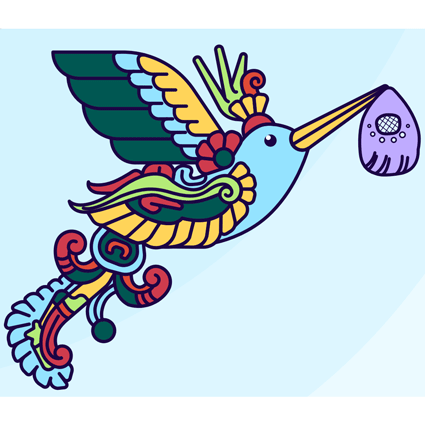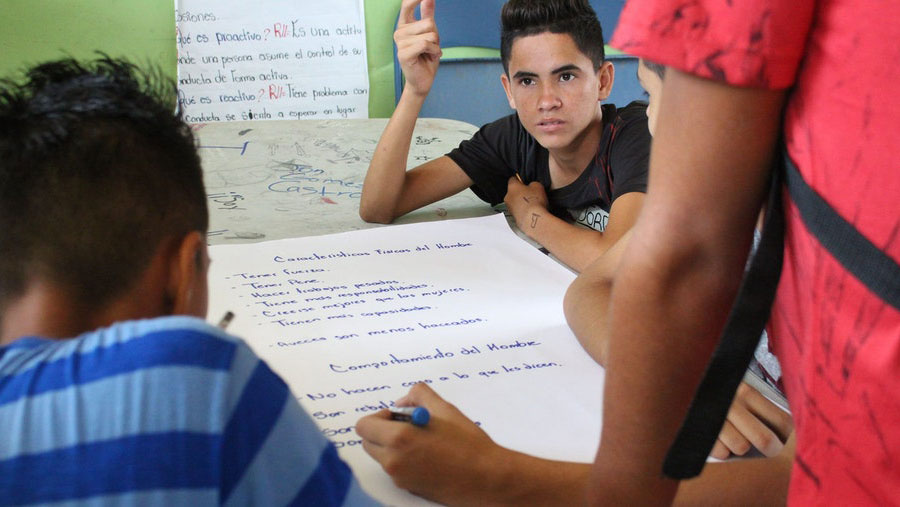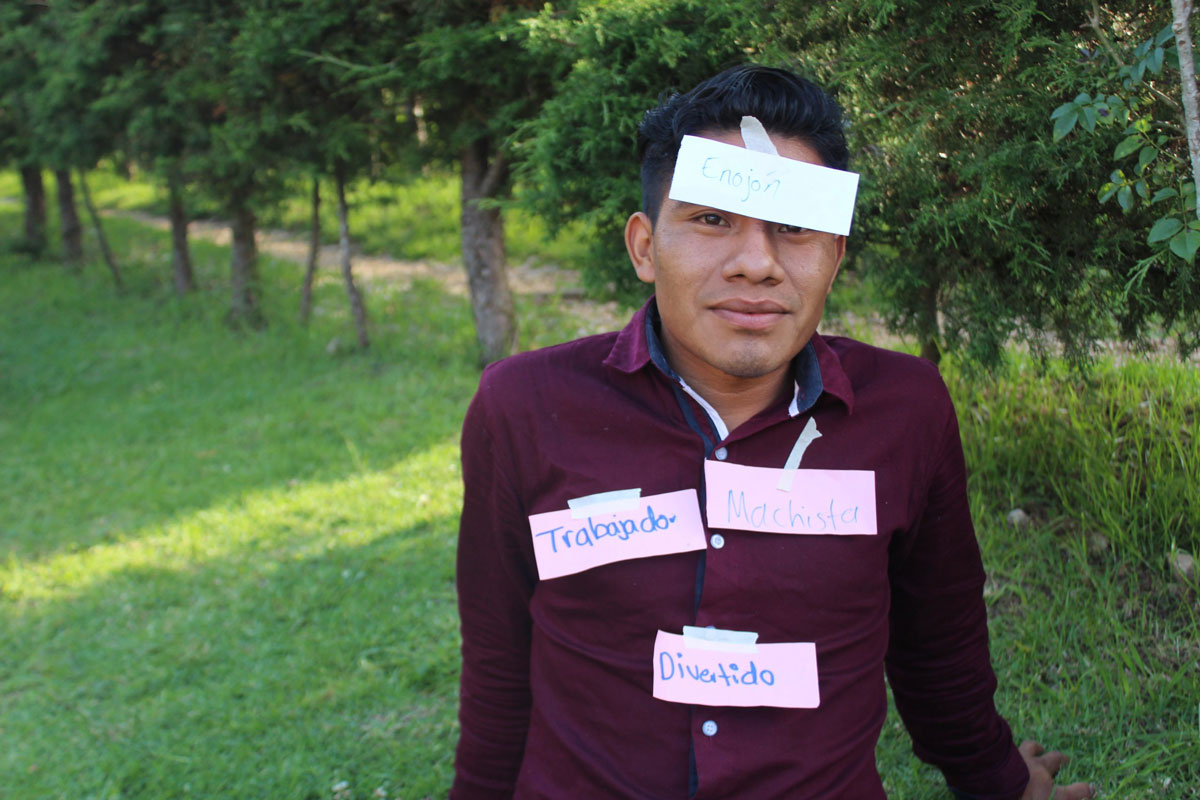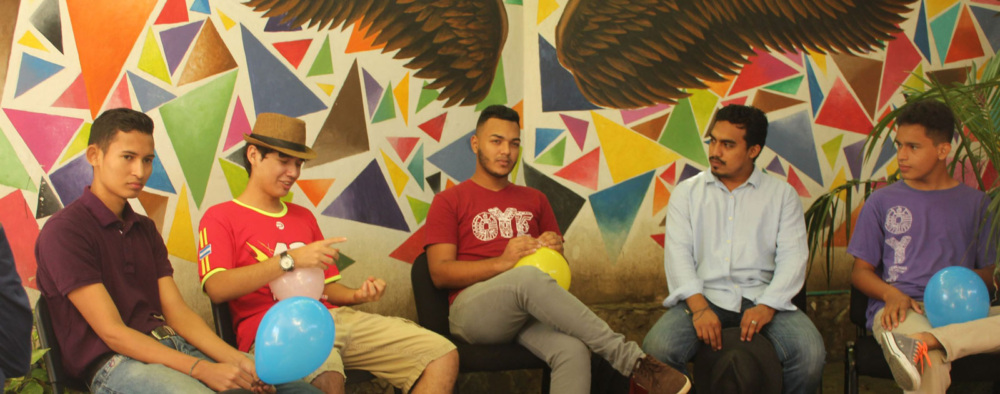
Justice de genre
Justice de genre
Cet article a été initialement publié sur Le blog de Girls Not Brides. Il est également disponible en espagnol.
Partout dans le monde, la discrimination fondée sur le sexe – c’est-à-dire les normes sociales et les stéréotypes qui privilégient les hommes et défavorisent les femmes et les filles – crée des obstacles à l’éducation et à l’indépendance des filles, une participation inégale des femmes dans les sphères sociales, économiques et politiques, et des violences basées sur le genre, notamment le mariage des enfants.
Les effets négatifs de la discrimination fondée sur le genre ne touchent pas seulement les femmes et les filles. Un modèle patriarcal de masculinité fondé sur la violence et la domination reproduit et aggrave également les problèmes qui touchent les garçons et les hommes, tels que l'intimidation, la dépression, le harcèlement et le mariage des enfants.
Pour encourager des formes de masculinité plus saines et non violentes qui favorisent des caractéristiques telles que l’empathie, l’attention et le respect, les attitudes sociales liées à la masculinité dominante et aux rôles de genre doivent être transformées positivement.
Au Fonds mondial pour l'enfance (GFC), nous avons vu de plus en plus d'organisations locales, de donateurs, de réseaux régionaux et d'autres acteurs communautaires développer des initiatives transformatrices en matière de genre. Ces efforts ont créé de nouveaux espaces pour que les garçons et les jeunes hommes puissent réfléchir aux impacts de la masculinité néfaste au sein de leurs familles et de leurs communautés.
Nous savons que, pour parvenir à la justice de genre pour tous, les garçons et les hommes doivent faire partie de la solution, en agissant comme des alliés dans notre travail en faveur des droits des femmes et des filles.
Mais… comment y parvenir ?

Grâce à mon travail de gestion une initiative de la crise financière mondiale Pour promouvoir des masculinités saines et l'égalité des sexes en Amérique latine, j'ai collaboré avec diverses organisations qui souhaitent travailler avec les garçons et les jeunes hommes pour faire progresser la justice de genre, mais ne savent pas comment commencer.
Comment impliquer les garçons ? Comment organiser les séances pour susciter un changement social ? Ce sont les questions que j’entends le plus souvent.
Il n’existe bien sûr pas de solution magique.
Mais, après plus de sept ans de promotion d’espaces sûrs et intimes pour les garçons et les jeunes hommes de différentes régions, origines et contextes, j’ai quelques principes directeurs pour allumer le feu de la transformation sociale :
Souvent, et surtout lorsqu'elles travaillent avec des garçons et des jeunes hommes, les institutions et les organisations reproduisent des attitudes centrées sur les adultes et tentent d'« apprendre » aux jeunes à devenir de meilleurs hommes (comme si nous avions toutes les réponses). De cette façon, nous transformons le genre en un « atelier » de transmission de connaissances et de concepts trop abstraits et éloignés de la vie des participants.
Bien qu’il soit important de revoir les concepts et les définitions liés au sexe et au genre, il est tout aussi important d’inviter les enfants et les jeunes à réfléchir aux réalités, aux défis et à la violence qu’ils vivent au quotidien.
Il peut être douloureux de réfléchir à nos vies et à la violence que nous avons perpétrée et subie en tant qu'hommes. Il n'est pas facile de s'examiner soi-même et de reconnaître ses erreurs. Nous devons donc créer des espaces fondés sur le respect et l'attention où nous pouvons vraiment nous ouvrir et aborder ces problèmes.

Tout au long de ce processus, nous devons reconnaître les progrès et identifier les revers, faire de la place à toutes les émotions possibles et identifier les opportunités de rire et de jeu.
En intégrant l’art, le jeu et la créativité dans nos interactions, nous pouvons accéder au monde des garçons et des jeunes hommes et nouer avec eux des liens plus profonds. En même temps, nous pouvons essayer de nouvelles façons d’être et de nous connecter en tant qu’hommes et planter les graines d’un monde meilleur.
En général, j’ai eu plus de succès lorsque j’ai structuré une séance sur les masculinités saines autour de trois moments clés, introduits par les questions suivantes :

De cette manière, nous pouvons favoriser la justice de genre et contribuer à mettre fin à l’une des plus grandes pandémies mondiales auxquelles nous sommes confrontés aujourd’hui : la violence contre les femmes et les filles, dont le mariage des enfants est l’une des manifestations.
La promotion de masculinités saines, qui commence en interne, peut ensuite devenir un bien-être social.
Animer un espace de promotion de masculinités saines exige de la responsabilité. Il ne s’agit pas de « transmettre des connaissances » ou « d’être un expert », mais de créer un espace sûr de réflexion partagée et d’apprentissage continu. En tant qu’animateurs, nous devons nous engager pleinement dans le groupe pour instaurer la confiance et le dialogue collectif. Nous devons être les premiers à partager, à réfléchir et à apprendre. Et nous avons besoin de l’aide de nos pairs pour continuer à le faire.
Parce que les actions personnelles transmettent le message le plus fort, les animateurs doivent incarner leurs valeurs, servir de modèles en construisant de meilleures relations et en éliminant la violence de leur propre vie.
Il reste encore beaucoup à faire, mais au GFC, nous nous engageons à soutenir et à apprendre des organisations locales avec lesquelles nous collaborons. Ces organisations – dans des pays comme le Honduras, le Guatemala et le Mexique – créent des espaces sûrs pour les garçons, élaborent des programmes dirigés par des jeunes et basés sur la culture, et promeuvent une éducation sexuelle complète pour parvenir à la justice de genre.
Nous pouvons tous contribuer au changement. Et je suis heureux de voir que les garçons et les jeunes hommes jouent un rôle actif.
Pour plus d'informations sur le travail avec les garçons et les hommes, consultez Girls Not Brides. Note d'information sur l'engagement des hommes pour mettre fin au mariage des enfants.
Photo d'en-tête : Espace de réflexion dans le cercle des masculinités saines promu par l'organisation de jeunesse OYE, El progreso, Honduras. © OYE Honduras
